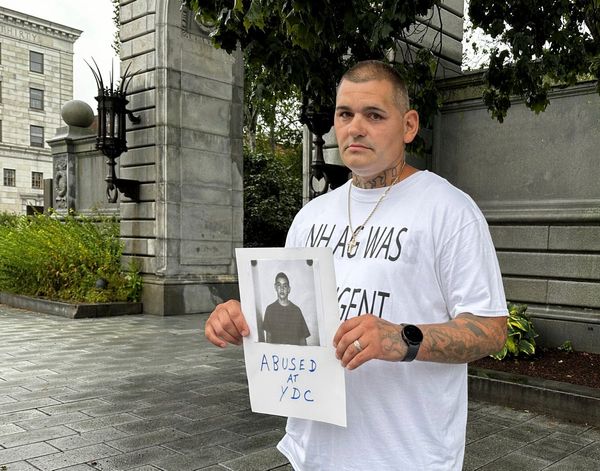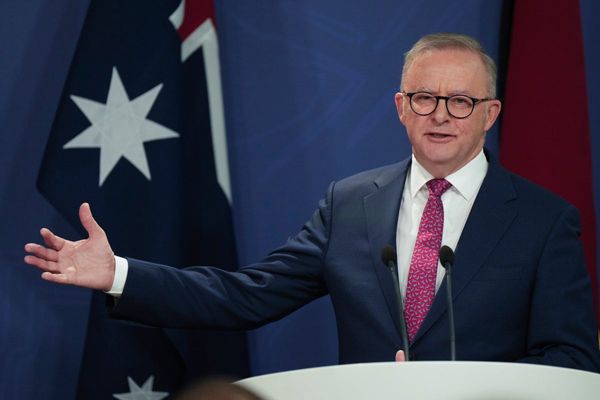
What might a rocky transition of power in the United States look like in the weeks ahead? What can President Donald Trump do to harm the United States on his way out of the White House? Might he actually retire to his many golf resorts or lay the ground to run again for president in 2024? These are all questions Americans and people around the world are weighing as former Vice President Joseph Biden’s victory in the 2020 U.S. presidential election appears all but locked up.
But with no examples of a modern U.S. president refusing a smooth transition of power, it is instructive to look beyond the United States’ borders for answers. Argentina’s 2015 presidential transition from Cristina Fernández de Kirchner to Mauricio Macri offers some hints of what might be coming. From last-minute government spending to bitter court battles, the outcome isn’t pretty.
Like Trump, Fernández de Kirchner was a fiery, outspoken, populist president who was beloved by her supporters. And like Trump, Fernández de Kirchner was quick to demonize foreign powers. But in her case, instead of China, it was the United States that she saw as the source for Argentina’s economic woes, calling U.S. hedge funds “vulture funds” for profiting from buying Argentina’s national bonds at distressed prices.
Unlike Trump, however, Fernández de Kirchner handily won the popular vote in Argentina’s general elections, both in 2007 and 2011. By 2015, she was constitutionally barred from seeking a third consecutive term, but to cement her legacy, she handpicked Daniel Scioli as her successor to run for president for the ruling Front for Victory party alliance. After Scioli lost narrowly to Macri in a runoff election, he and the ruling party conceded defeat. But Fernández de Kirchner did everything in her power to make the transition of power as messy as possible.
In the weeks before she left in office, Fernández de Kirchner controversially signed a string of new decrees that diverted billions of dollars in funds out of federal government control for the coming year and sunk Argentina’s already burdened central reserves to dangerously low levels. Some of Fernández de Kirchner’s political appointees in public institutions, such as the Central Bank, initially refused to resign. Macri said that his meeting with Fernández de Kirchner after the election, a traditional discussion between the incoming and outgoing presidents to plan the transition, was “worthless.”
On the international stage, as the 2015 general election was heading to a runoff, Fernández de Kirchner greenlighted the signing of $15 billion in loans from China to build two nuclear power plants. After Macri won, Fernández de Kirchner’s Ministry of Federal Planning then failed to share documents with the incoming government outlining the terms of some of the country’s multibillion infrastructure deals with Chinese state-owned banks. Fernández de Kirchner even went ahead with appointing new ambassadors. All this laid a minefield for Macri to undo at home and abroad upon entering office.
Fernández de Kirchner and Macri also feuded over protocol for the inauguration, to the point that Macri obtained a court order ruling the exact hour when Fernández de Kirchner’s term ended so that she had no authority over the ceremony. Fernández de Kirchner eventually refused to participate, making her the first outgoing president since 1983 not to pass a ceremonial baton and place a sash on her successor. This is only a symbolic gesture that demonstrates the peaceful transfer of power to the country. But it holds particular importance for Argentina and its history of military dictatorship. On her final night in office, Fernández de Kirchner led a massive rally, calling on her supporters to take to the streets to voice any anger they held towards Macri. In one of her final acts of defiance, she refused to hand over the official presidential Twitter account.
Argentina’s shaky transition of power offers some lessons for the United States. In the weeks ahead, members of Biden’s team should be wary of focusing too much attention on how they intend to shape domestic and foreign policy in the years to come. Instead, they should stay clear-eyed about the here and now, and what they can do to limit attempts by the Trump administration to block or frustrate entry into the White House, or to gain full access to information about what the Trump administration was up to. In Argentina, despite the quarrels between Fernández de Kirchner and Macri, outgoing cabinet ministers met with their successors to plan the transition. The unconventional transition to come in the United States demands that unconventional methods be taken by those that prioritize national stability over political creed.
Trump and his supporters in the Republican Party might also glean something from Argentina’s transition. Fernández de Kirchner’s recalcitrance in leaving office was broadly seen as paving the way for her political return. She still had her eyes on the presidency, and after sitting out a term, the Argentine Constitution did not prohibit her from trying again.
Fernández de Kirchner stayed in the public eye after leaving office and remained a political thorn in the side of Macri’s government. Two years after leaving the presidency, she returned to the political stage after winning a Senate seat. But a judicial probe charging that her administration took bribes from construction companies in exchange for public works contracts tarnished her reputation over time. The ex-president called the legal proceedings a political witch hunt. Her fervent supporters rallied outside the courthouse, but despite maintaining a personality cult around her, after years in court she was deemed nonviable as a presidential candidate by the political alliance she once led.
Although Fernández de Kirchner eventually returned as vice president in Argentina’s current government, which ousted Macri from power last year, and some see her as the real power behind the throne, being second in command was not the position she coveted. Some fear Fernández de Kirchner is using her return to power to evade her corruption charges by steering through judicial reform, but the move has undermined the present government’s standing.
Like Fernández de Kirchner, Trump is already planning to hold post-election rallies, maintains a massive social media following on Twitter, and is musing about a 2024 presidential run. Trump also faces legal troubles once he leaves office. But if he continues to make moves that further destabilize U.S. politics, he may ultimately undermine his chances of returning to the White House one day. Trump won nearly 48 percent of the popular vote at time of writing, but nearly 80 percent of Americans see Biden as the rightful winner of the election. The writing is on the wall, but Trump was never a keen reader. He may maintain a strong base to push him to the top of a future Republican primary, but if Trump’s last days in office become completely unhinged, his ability to win the general election will diminish.
Argentina’s transition of power five years ago offers only imperfect answers for what comes next in the United States. After all, unlike Trump, Fernández de Kirchner and her party actually admitted defeat and left office. With Trump, there is bound to be extreme turmoil ahead. President or not, he will do everything in his power to stay in the limelight. A tumultuous transition of power might continue as everyday politics for years to come.







